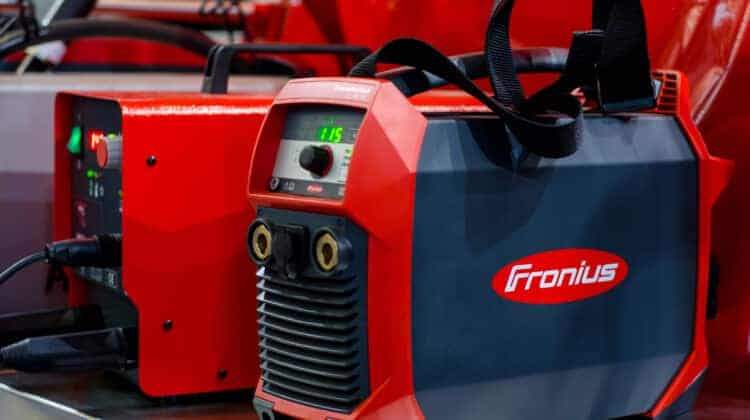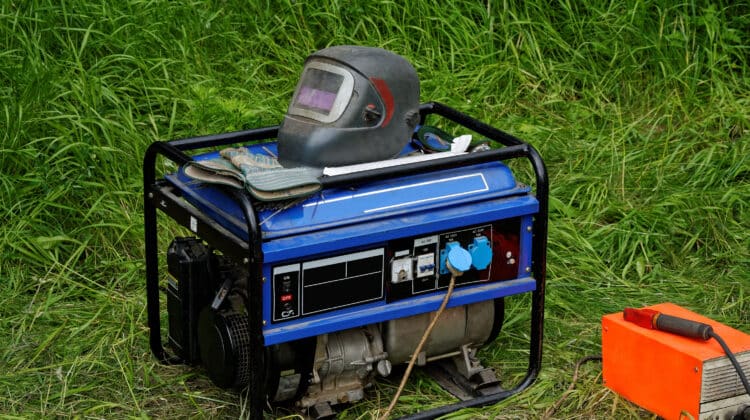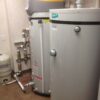
Are you curious to find out how many watts does a welding machine use?
Compared to other tradecrafts like carpentry and masonry that require a specific skill set, performing excellent welds in large parts depends on welding machines.
Although welding skills still play a significant role in welding processes, a welder cannot do intricate or complicated welds without using particular machines.
Table of Contents
How many watts does a welding machine use?
There are many types of welding machines for different welding processes.
The wattage requirement for each welding machine deviates following its amperage capacity.
For instance, a welding machine has a maximum amperage output of one hundred sixty. Thus the wattage consumption would be placed around three thousand six hundred watts.
Another welding machine has a maximum amperage output of one hundred eighty to two hundred amps. Then the wattage consumption will be four thousand nine hundred watts.
And another machine has an amperage rating of two-hundred fifty, and its wattage has six thousand watts.
In most cases, the number of watts needed depends on the welding machine’s manufacturer’s requirements, so make sure you go through it before purchasing one.
After checking on the wattage requirements of your particular welding machine, you need to give an extra twenty-five to thirty percent allowance. It is because many need a start-up surge to switch on.
To get the appropriate wattage requirements, some types of welding machines need to have generators.
Why do you need a generator for your welding machine?
A principal reason why welders need generators to power their welding machines is due to the requirement for their welding tasks.
Some welders do their jobs in locations that do not have a stable power source, so generators serve as an excellent source for powering their welding machines.
Some are compact and portable and can bring anywhere, and some need fuel instead of electricity.
What are the welding machines that can run on generators?
There are two kinds of generators: standard and welder generators and the second one is particularly designed for welding machine usage. It can also do the functions that a standard generator does.
A welder generator is applicable for many types of welding machines, like TIG, MIG, Stick, PTAW, and FCAW.
How do you safely attach a welder generator to a welding machine?
Most generator manufacturers have their power outlets situated at the front side, and this way, the welding machines can connect easily.
If a problem arises in the plugging procedure, no need to worry since it is a common occurrence.
For this, it is best to contact an electrician since it necessitates cutting the plug, rewiring the cable, and attaching it to another plug to fit.
However, the best fix for this is to buy an adapter from your local hardware store to make the ill-fitting plug fit.
What are the different kinds of welding machines that welders use?
Ordinary lay people who only have a vague understanding of welding might think welders only use one type of welding machine for various welding processes.
However, in the welding business, there is no one-size-fits-all machine, which can do different welding tasks.
There are ten various types of welding machines that are the most commonly used by welders. Some have specific uses, and some have multipurpose applications.
Stick machine or SMAW or shielded metal arc welding machine
These welding machines are available with both DC (direct current) and AC (alternating current) capacity.
A welder using this machine will also need a stick or a flux-covered electrode rod, which is available in different sizes.
This welding machine does not need a gas shield to operate, so there is no need for a tank.
The rods are encased with flux to protect against contaminants, and you can use them to weld outdoors.
You can use this welding machine on rusty and painted surfaces along the electrode rod.
Stick welding does not provide the best welding output since twenty percent of the rod goes unused and produces a lot of waste.
But it is affordable and ideal for novice welders to use.
GMAW or gas metal arc welding machine or MIG machine
Welders tend to use a MIG welding machine due to its ease of use. There may be variables that a welder might find difficult at first but will be able to pick up quickly.
This type of welding machine necessitates a gas tank (usually Argon) since it uses an external gas shield.
After using it for a while and will gain familiarity with the equipment and how different gases react, you can use various gases to work with various metals.
FCAW or flux-cored arc welding machine
Due to a flux-encased electrode, a welder can use the FCAW machine outdoors as well as indoors. And also, you do not need an external gas shield for it.
The electrode is fed continuously, and this way, you do not need to stop the machine then start it up again.
The FCAW machine does not emit too much smoke and electrode discharge.
It works well with thick metals and is not to be any thinner than twenty gauges.
It has similarities to the MIG welding procedure, but it is more powerful and utilizes a different gas shield.
GTAW or gas tungsten arc welding machine or TIG machine
Welders that use the GTAW welding machine need to have a thorough understanding of it since it demands to multitask.
On one hand, you need to hold the welding torch and feed the filler wire with the other hand.
Controlling the amps for temperature is done through a foot pedal to make it either lower or higher.
This type of welding machine is mostly used for intricate and exact welds, which work well with various metals and can be used with different metal thicknesses.
EWB or energy beam welding machine
The EWB welding machine is not appropriate for home use since it needs to be operated in a vacuum due to the air absorbing the electron beams.
However, it is beneficial in welding thick and thin metals and can fuse different metal types.
PTAW or plasma transferred arc welding machine
A PTAW welding machine has similarities to the GTAW machine but surrounding its tungsten electrode is an anode. It acts as a shield for the electrode, shielding it from the filler used in this welding procedure.
This type of welding machine is built to be massive and used in large industries, which makes it more costly than the ones prior. It is mostly utilized in manufacturing aircraft.
AHW or atomic hydrogen welding machine
A welder needs to know everything about this type of welding machine before using it. It has a welding procedure that uses hydrogen as a gas shield, wherein an electric arc is formed between two tungsten electrodes.
This welding technique is barely used by welders due to incurring large costs. Yet, it can be used for thick and thin metals and is useful for fast welding.
Submerged arc welding machine
This welding machine is done mechanically wherein an arc is made between a work base and a continually fed electrode.
A powered flux is used instead of a gas shield, and then it is submerged by the arc and disappears. To reduce wastage, you can reuse the flux.
This welding process creates excellent and high-quality welds. Since this process is machine-based, you do not need to have experience in using it.
Gas welding oxy acetylene
This welding method combines oxygen and fuel gas to provide heat for welding. The principal feature of this technique is to produce a flame at the end of the torch.
The flame then melts the base metal and a filler to create an uninterrupted weld. This method works well with thin metal pieces but not thick ones.
With this technique, you can maintain effectively its temperature and weld beads. It is especially effective for people looking for an affordable means to weld and whose equipment is portable.
This welding method only works well with iron-based metals that are applicable in many industries.
Multipurpose welding machines
There are types of welding machines that apply to various techniques. This way, you will not be limited to a single welding method and can do different welding processes.
These MIG welding machines can also be used for FCAW techniques, and you may need to get more accessories to accommodate it or alter their settings.
There are also TIG machines applicable for Stick procedures, and you only have to change their settings.
What are the safety gear needed for welding?
- Safety goggles or glasses – Your eyes need to be protected while in the weld zone since anything can accidentally fly and hit your eyes like sparks, slag, etc.
- Welding gloves – These are essential gear for welders to prevent burns from sparks.
- Work boots – A welder’s workshop has many sharp objects strewn about on the floor, and you thick boots with thick soles to traverse the vicinity.
- Welding helmet – It provides total protection for your head and eyes, and make sure it has a tinted lens.
- Ear plugs – Earplugs can be optional if your workspace is not noisy. If you need it, make sure it can block the noise but would not be a hindrance to your welding tasks.
- Apron or leather jacket – Welding sparks will fly, and you need to protect your skin and clothing, so these serve as appropriate covering.
FAQ
If I have a ninety amp welding machine, what size generator do I need?
A ninety to one hundred amp welding machine is relatively small, so it can function with a three thousand watt generator and generate twenty-five amps and a one hundred twenty volt output.
Just remember its calculation of amps=wats/volts.
How many amps do a one hundred ten volt welding machine need?
A one hundred ten volt welding machine can produce about one hundred thirty amps, which needs about fifteen amp circuit breakers to operate.
What are the tips for welding with a generator?
- Size the generator to your particular welding machine – Get the wattage requirement of your welding machine before connecting to the generator.
- Starting and shutting it down – Take the plug out of your welding machine before starting or turning off the generator.
- Auto-idle – Turn off the generator’s fuel-saving setting so that it always operates in full power as it is connected to the welding machine.
- Fuel – If you have a gas generator, make sure it has enough fuel. You do not want your generator to suddenly shut down while still welding.
- Maintenance – Make sure that the generator is running smoothly and do not use it in conjunction with the welding machine if it is not operating well.
- Extension cords – Make sure you do not use extension cords that are in a bad condition or is undersized.
Conclusion
Before deciding on getting a generator for your welding machine, make sure you do the proper research about its wattage requirement.
It is always better to be safe than sorry, and so it is always great if you purchase something that has more power capability than less.





